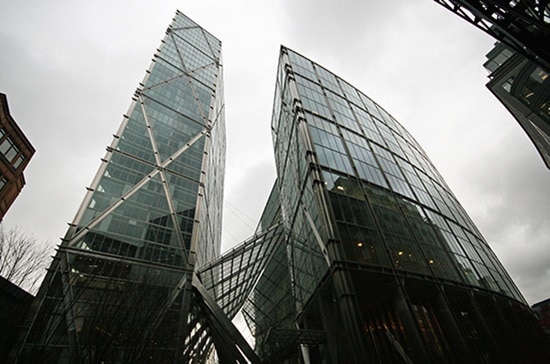Drylining and passive fire protection are two distinct disciplines, but they are increasingly being let by contractors as part of the same package. As a result, growing numbers of drylining contractors now face the challenge of taking on passive fire protection, but what do they need to know? Nigel Morrey, technical director at ETEX Building Performance UK, which includes passive fire protection specialist Promat, highlights some important points.
Fire protection comes in active and passive forms. Active fire protection includes measures like fire extinguishers, sprinkler systems, smoke detectors and emergency lighting. Passive fire protection – the kind we’re concerned with – is built into the fabric of the building in the form of fire-resistant floors, walls and doors. The best fire protection solutions consider the specific design of individual buildings and how they are used by occupiers. They combine both active and passive measures in a holistic approach. While dryliners need only concern themselves with the protection that is built in, it’s worth being aware that this sits within a broader framework.
Across the built environment in recent years there’s been a move to drive quality standards, boost supply chain transparency and ensure consistency through independent third party accreditation of both products and installers. It’s a move that we’ve fully supported.
Third party assessment of products and installers has allowed contractors to identify those products and supply chain partners that can offer independently assured quality and technical performance. While it may be perceived to add additional time and cost into the equation, the shift has seen standards rise considerably and costs reduce because the use of inappropriate systems and installations – and the associated rectification costs – are avoided.
Passive fire protection is no different. Since the rise in third party accreditation, the number of deaths due to fires in buildings has fallen considerably. There are a number of schemes for both products and installers, but the Association for Specialist Fire Protection (ASFP) only recommends those that have been accredited by UKAS: you can find a comprehensive list on www.asfp.org.uk
Not only do these schemes assess both products and installers thoroughly, but they’re an ongoing assessment process with materials tested every few years to ensure consistency and technical performance. Critically, by using products with third party accreditation, you avoid being caught out by a manufacturer that gained accreditation initially only to downgrade the composition of the product to cut costs. Cheaper, non-accredited alternatives are available of course but – as is usually the case – skimping on quality in the name of value engineering is a false economy.
Any fire protection system is only as good as the installation, and vice versa, and substandard versions of either cause long-term issues as well as slowing down build time. There have been multiple examples recently of private finance initiative (PFI) projects – in which cost was clearly the central concern during construction – where significant defects in fire protection were discovered long after handover. The specialists were brought in too late, with major time and cost implications for the client.
Third party accreditation not only assures the quality of the job, it also enables vital transparency throughout the supply chain. Accreditation provides accountability after handover is complete, giving the client and/or facilities management company all the information they need to manage the asset going forward. It’s also evidence of due diligence on the part of the dryliner, actively demonstrating that they take seriously their contractual duty of care which each supplier must fulfil.
If gaining accreditation fits within the balance of your in-house skill set, then it’s worth considering for your business, but equally dryliners shouldn’t be afraid to subcontract this element of the package to a specialist. If you do take this route, early engagement is key. It’s worth getting your chosen supplier involved as soon as possible – specialists can advise on how passive fire protection can fit most seamlessly into your plans, and also recommend the best materials for your specific requirements.
Passive fire protection with accredited materials and installers saves lives and protects property, so either look into gaining third party accreditation yourself or subcontract to a specialist – it could save a life, and certainly won’t do your reputation within the supply chain any harm.
Find out more
www.promat-international.com


